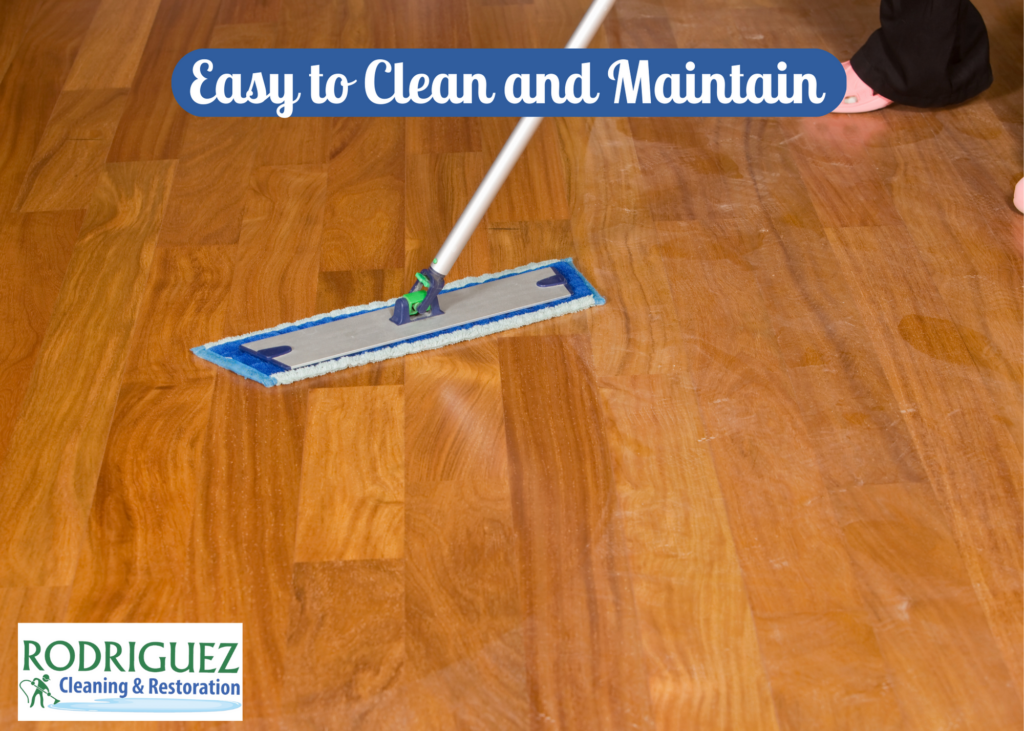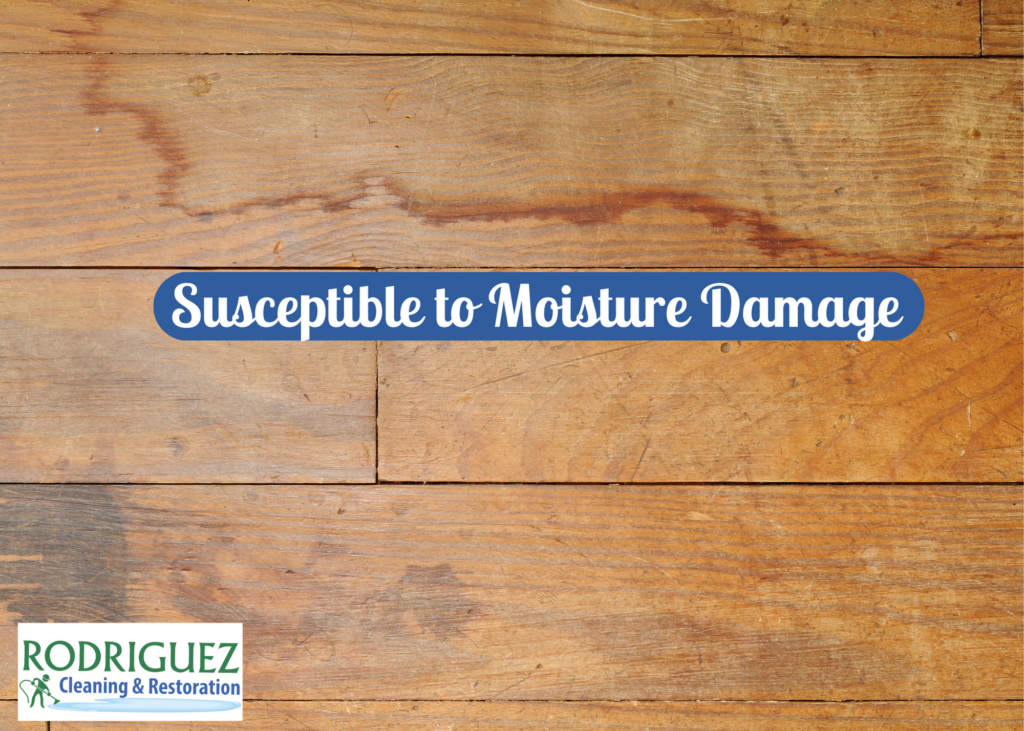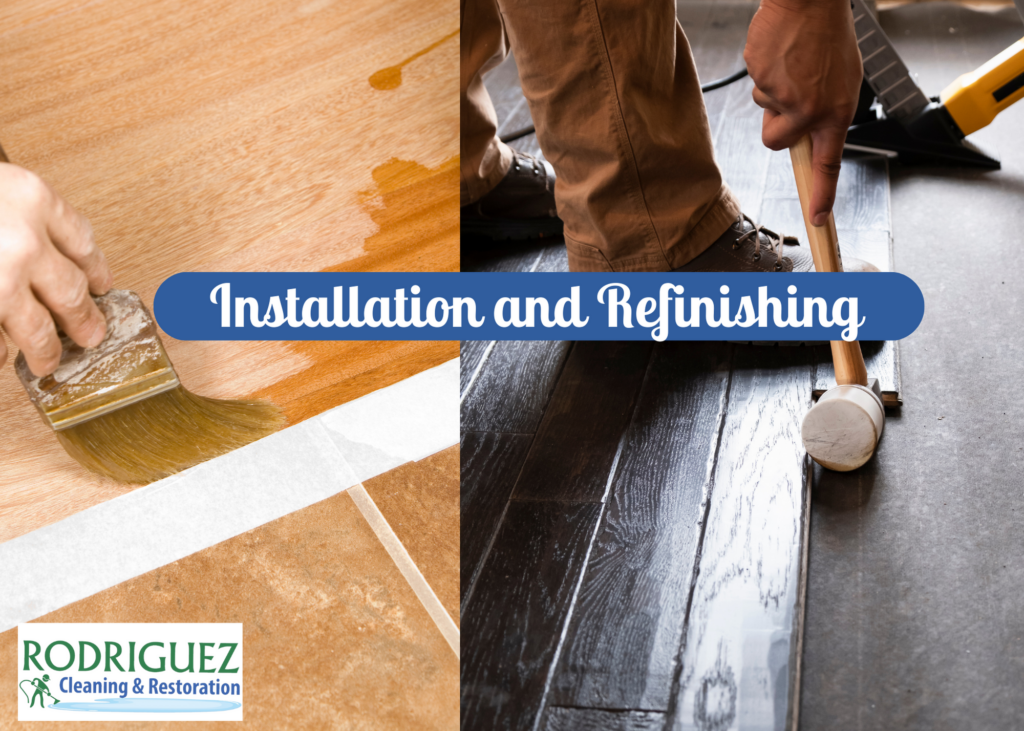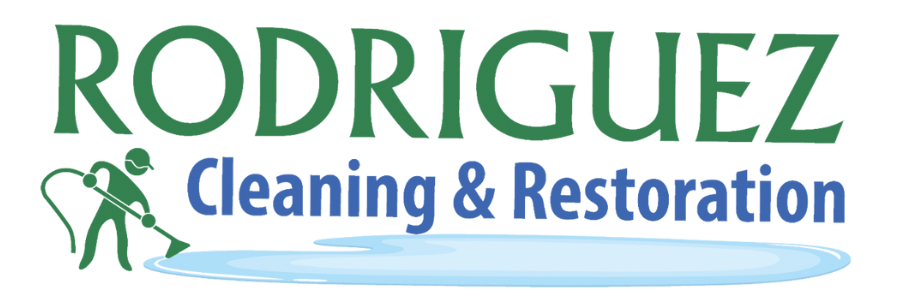What are the advantages and disadvantages to having hardwood floor?

Wooden floors have long been popular with homeowners due to their timeless elegance and natural beauty. With their warm tones and durability, wooden floors can enhance the aesthetic look of any home. However, like any flooring option, they come with their own set of advantages and disadvantages. We will explore the pros and cons of wooden floors, helping you decide when to consider this flooring option.
Pros of Wooden Floors
Timeless Beauty
One of the primary advantages of wooden floors is their timeless beauty. With their natural grain patterns and rich colors, wooden floors add a touch of sophistication and elegance to any room. They create a warm and inviting atmosphere that can enhance the overall aesthetic appeal of your home.
Durability and Longevity
One of the standout advantages of wooden floors is their exceptional durability and longevity. When installed and maintained properly, wooden floors have the potential to last for several decades, making them a cost-effective flooring choice in the long run.
Unlike other flooring materials that may wear out or require frequent replacement, hardwood floors are renowned for their ability to withstand heavy foot traffic and daily wear and tear. They are highly resilient and capable of enduring the demands of bustling households, active children, and pets.
Moreover, wooden floors exhibit more resistance to scratches, dents, and stains than alternative flooring options. While no floor is entirely impervious to damage, wooden floors offer a robust and durable surface that can handle the challenges of everyday life. Minor scratches or blemishes that may occur over time can often be repaired through refinishing, restoring the floor’s original beauty.
Easy to Clean and Maintain
One of the significant advantages of wooden floors is their relative ease of cleaning and maintenance. Unlike other flooring options requiring specialized cleaning products or extensive upkeep, wooden floors offer a straightforward cleaning routine that can keep them looking their best.
Regular sweeping or dusting is often needed to maintain hardwood floors’ cleanliness. A soft-bristle broom or a microfiber dust mop can effectively remove surface dust, dirt, and debris that may accumulate throughout the day. This simple practice helps prevent particles from scratching the floor’s surface and maintains its polished appearance.
Versatility and Design Options
One of the remarkable advantages of wooden floors is their versatility in terms of design options. Whether your home has a traditional, contemporary, or rustic theme, there is a wooden flooring option that can perfectly complement your desired interior style.
Wooden floors come in various species, each with distinct characteristics and aesthetic appeal. From the rich warmth of oak to the elegant grain patterns of maple or the exotic allure of Brazilian cherry, the variety of wood species available ensures that you can find a flooring option that aligns with your design vision. Each wood species has its unique color palette, texture, and natural markings, adding depth and character to your living space.
Increased Property Value
Installing hardwood floors in your home can substantially impact the overall value of your property. Hardwood floors are widely recognized as a premium feature and are highly sought after by potential homebuyers. Your investment in wooden flooring can pay off in increased property value.
One of the primary reasons why wooden floors contribute to higher property value is their timeless appeal. Unlike certain flooring materials that may go in and out of style, wooden floors have maintained their popularity and desirability throughout the years. Their classic beauty and elegance have a universal appeal that transcends design trends, making them a valuable asset for homebuyers.
Disadvantages of Hardwood Floors
Cost
Hardwood flooring can be a significant investment compared to other options like carpet or vinyl. The cost of hardwood floors can vary depending on several factors, including the type of wood, installation method, and additional treatments or finishes chosen. Before committing to wooden floors, it’s essential to carefully consider your budget and weigh the long-term benefits against the initial expense.
The installation method chosen also affects the overall cost of wooden floors. Different installation methods may be employed depending on the project’s complexity and the condition of the subfloor. Nail-down or staple-down installations, where individual planks are attached to the subfloor using nails or staples, are often more cost-effective. However, other methods like glue-down or floating installations may be necessary for certain situations, adding to the overall expense.
Susceptible to Moisture Damage
Wooden floors are prone to moisture damage, which can cause warping, cupping, or wood swelling. They are not recommended for areas with high humidity levels or prone to water spills, such as bathrooms or basements. Adequate precautions, such as using rugs or mats in vulnerable areas, are necessary to prevent moisture-related issues.
Susceptible to Scratches and Dents
While hardwood floors are generally durable, they are susceptible to scratches and dents, particularly in high-traffic areas. Pet claws, furniture legs, and sharp objects can leave marks on the surface. However, you can minimize scratches and dents with proper care and maintenance, such as using furniture pads and area rugs.
Sensitivity to Temperature and Humidity Changes
While wooden floors offer many advantages, knowing their sensitivity to temperature and humidity changes is essential. As a natural material, wood can expand or contract in response to variations in these environmental factors. Understanding this characteristic can help homeowners manage and maintain their wooden floors.
One of the primary concerns with temperature and humidity fluctuations is the potential for gaps between the wooden planks. During high humidity, when moisture levels in the air increase, wood tends to absorb moisture and expand. Conversely, in drier conditions, such as during the winter months when indoor heating can cause low humidity levels, the wood may lose moisture and contract. These natural movements can result in small gaps between the planks, particularly in areas with more significant changes in temperature or humidity.
Extreme temperature changes, such as those experienced in unregulated environments like unheated cottages or properties in regions with harsh climates, can further exacerbate the expansion and contraction of wooden floors. The sudden expansion or contraction caused by extreme temperatures can lead to more noticeable gaps, cupping, or buckling of the wood.
Installation and Refinishing
Installing wooden floors requires professional expertise and can be a time-consuming process. Additionally, after years of use, refinishing hardwood floors to restore their original luster and remove scratches may be necessary. Refinishing involves sanding, staining, and applying a protective finish, which can be disruptive and costly.
Conclusion
Wooden floors offer undeniable advantages, such as their timeless beauty, durability, and easy maintenance. They can increase the value of your property and provide a wide range of design options to suit your taste. However, it’s essential to consider their potential drawbacks, including the initial cost, susceptibility to moisture damage and scratches, and the need for professional installation and periodic refinishing.
Before making a decision, carefully evaluate your lifestyle, budget, and the specific needs of your home. Consider alternative flooring options if wooden floors’ disadvantages outweigh your situation’s benefits. Choosing the suitable flooring material is a personal decision that should align with your preferences and long-term goals for your home.




